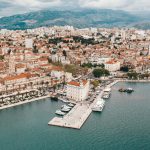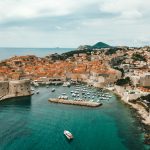Favourable exchange rates, a new wave of seasonal employment and lower taxes have opened up space for consumption growth.
At the height of the crisis around Agrokor, citizens have spent more money than was expected. Sales in retail trade increased nominally by 10 percent compared to the same month last year (7.7 percent in real terms, when inflation is taken into account). The turnover lost by the Konzum chain has been transferred to other retailers, which have good reason to be satisfied with their results. The top five retailers in the country are Konzum, Plodine, Kaufland, Lidl and Spar, reports Večernji List on May 4, 2017.
The retail sector is dominated by major players, which take about 65 out of every 100 kuna spent in stores. However, the wave of powerful retail chains has not destroyed smaller retailers, which have managed to keep one quarter of the market share. So far, the hardest hit are middle-sized retailers which hold only about ten percent of the Croatian retail sector. Retail sales began to recover starting from September 2014 and have been steadily growing for 31 months in a row, with the increase in March being the highest since August 2007.
In addition to foreign tourists who continue to pay an important contribution, higher consumption is also helped by stronger seasonal employment, increases in wages, public sector raises, more favourable exchange rates and reduced indebtedness of the population. The strengthening of the kuna has lowered euro’s loan rates by about two percent, and the conversion of loans in Swiss francs into euros has also left debtors with more spending money. Still, the retail levels are 11 percent lower than the pre-crisis levels in 2008, which is not surprising given that today there are 135,000 employed persons less than then, although there are 97,000 pensioners more.
The standard of Croatian citizens is well illustrated by the volume of retail trade turnover per capita. Damir Anić, a researcher at the Economics Institute, says that every Croat spends on average of 2,900 euros a year, which places Croatia among the five poorest nations in the European Union. The list of poorest nations is led by Bulgaria with 1,700 euros per capita, while the richest is Luxembourg with 59,000 euros. Anić adds that low per capita spending is primarily due to low levels of GDP and low consumption levels compared to more developed EU countries.
In 2014, the spending was 48 percent lower than the EU28 average. Sectoral analysis has shown that Croatian retail trade has a 42 percent lower labour productivity, as measured by turnover per employee, resulting in low wages, low purchasing power and low consumption in Croatia.







